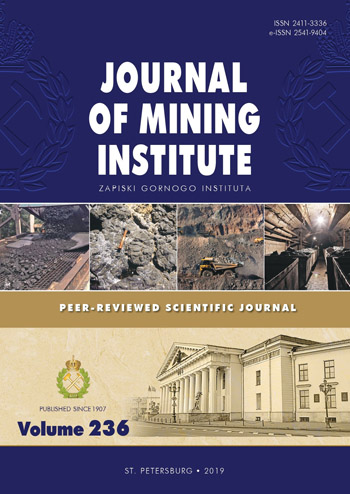Interpretation of the tracer investigation results considering convective mass transfer
- 1 — Ph.D. Associate professor Tyumen Industrial University
- 2 — Ph.D., Dr.Sci. Professor Tyumen Industrial University
- 3 — Ph.D. Associate professor Tyumen Industrial University
Abstract
The paper discusses the results of interpreting well tracer studies. It is shown that from the law of mass conservation it follows that when filtering a volume of an indicator, part of the injected tracer flows into the matrix. With the flow of fluid containing the indicator from the low-filtration resistance channel (LFR) into the surrounding matrix, the linear dimensions of the flow area depend on the permeability and porosity properties of the high-permeability channel and the matrix. While another part of the tracer moves toward the production well, its mass is lost due to diffusion processes. From the solution of the diffusion equation, it follows that the initial concentration of the tracer decreases in the course of filtration along the LFR channel. To interpret the results of the tracer studies, different cases of the LFR channels' location in the volume of the productive formation are considered. The varied parameter w allows characterizing the presence of several peaks in the concentration of the indicator and calculation the filtration parameters of the LFR channels. Depending on the known technological indices, several methods for determining pore volumes in the LFR channels have been proposed. To reduce the water cut in producing wells and to apply the technology of changing or aligning the injectivity profiles, calculations of the pore channels' radii in the mass of highly permeable seams are presented. It is shown that the volume of the chemical reagent pumped into the injection well to isolate the LFR channel is affected by the linear dimensions of the drainage area for the aqueous solution of indicator. Examples of the calculation for the permeability and porosity parameters of the LFR, the volume of pore channels necessary to isolate water inflow, and the radii of pore filtration channels, which influence the selection of the size of chemical reagent molecules, are given.
